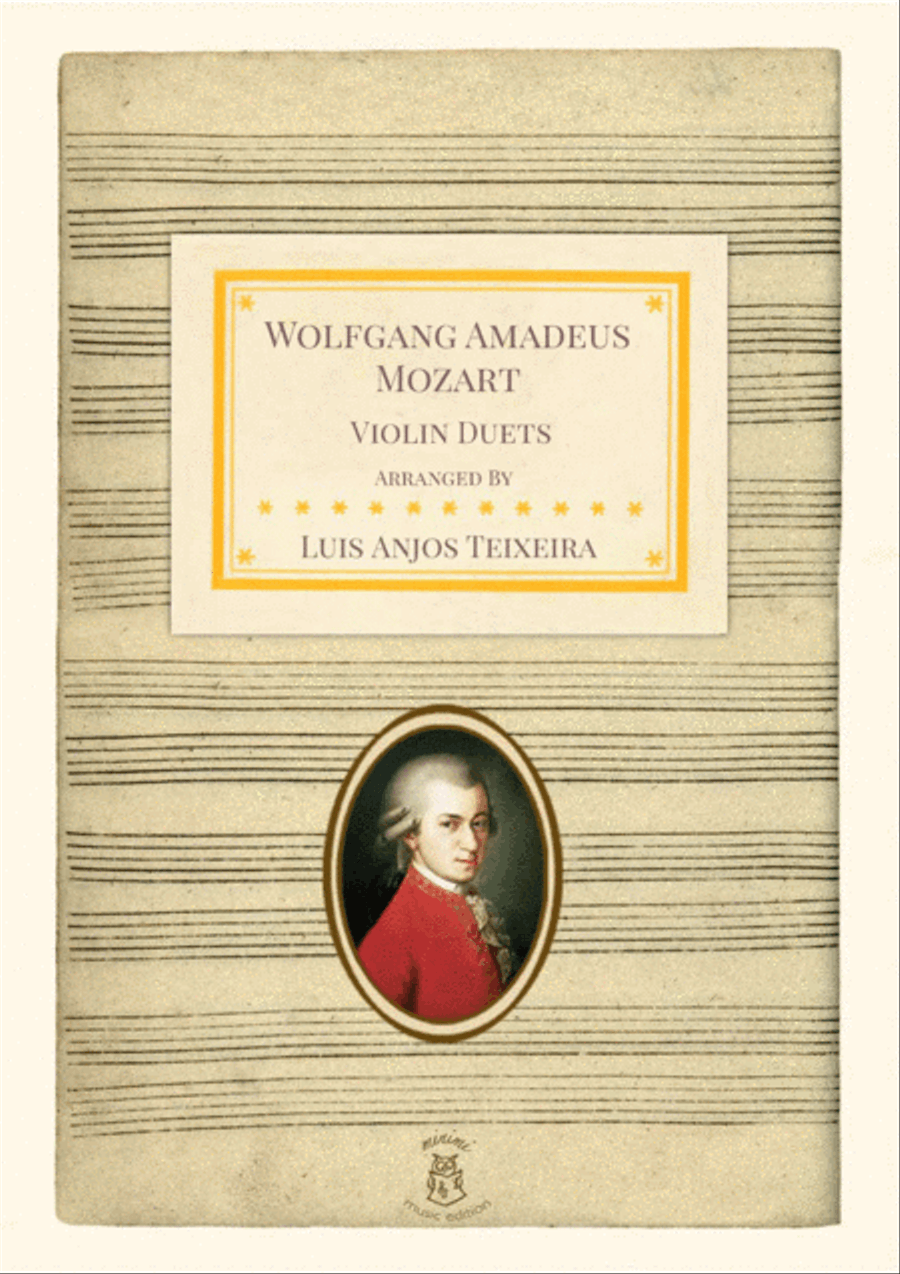Violin Duet Violin - Level 3 - Digital Download SKU: A0.889440 Composed by Wolfgang Amadeus Mozart. Arranged by Luis Anjos Teixeira. Baroque,Christmas,Concert,Standards. 35 pages. Luis Anjos Teixeira #4758249. Published by Luis Anjos Teixeira (A0.889440). Wolfgang Amadeus Mozart, is probably the most beloved artist that ever existed in this World. His work is without any doubt amongst the highest cultural achievements of the Human Being. To understand his cultural environment and musical practices I would advise you to read among others also the following books: „A Treatise on the Fundamental Principles of Violin Playing „Versuch einer gründlichen Violinschule from Leopold Mozart and from David D. Boyden A History of Violin Playing from its Origins to 1761. Also the biography righten by Jean et Brigite Massin gives us a deep view and idea of this times. Mozart wrote in Wien at 27.07.1786 this 12 duets for 2 basset horns K. 487, for his very Dear Friends „the Jacquin Family. This arrangement for 2 violin proposes an intime relation with the original work, but allows us to perform it also with modern instruments and to apply todays standards of musical literature praxis. No changes where made on the original composition, only the presentation of the score has been adjusted to contemporary violin music literature. It is also perfect adjusted for the use of baroque violins. I transposed it for the violin and introduced interpretation symbols to shorten some notes and induce loudness variations. The bowing is adjusted to violin performance but very much compromised with the ones in the original scores in wish they also meant a musical legato. I advise you to adjust much of the bowing to your taste and interpretation. Fingering is also relative to taste and school practices and is left to the artists choice. In order to leave the original notation as much untouched as possible I shortened the length of some notes with the „Staccato symbol to originate silence in between them. You are also free to further shorten even many more notes. As Mozart said - „The music is not in the notes but in the silent in between. In the arrangement, instead of repetitions, the performers interchange their parts so each of them will get to play as first and second violin player along each piece. This was common practice in chamber music when both musicians where at the same level. Very Human, this work comes from the hand of a musical Genius no other than Mozart. I tried to do an arrangement that would bring us as close as possible to the musical intention of the original work. This music demands accuracy and a very lively sensitive approach, it is a refined work of art, totally appropriate for serious „concert halls, for advanced students and great performers. Very useful of course for the music classroom on a wide range of various practices with students and also little concerts or presentations. It was righten for close friends and it should be practiced and performed with a heart full of Love and compassion. You should feel Free to apply in this piece the Art and technic that expresses entirely your individual skills, Your taste and Soul. Have fun! It is a piece that can be used in many different kinds of situations, from the serious concert hall to a funeral, in Easter or even Christmas celebrations and all other kinds of Spiritual events or even joyful social meetings. When performed Live It will give you back a great feedback from the public, you will always want to have it in your repertoire. The score was written on Finale. The sound file was produced with samplers from Garritan and conceived merely as an audio support for the presentation of this score. Thank you very much for taking your time to read this text and to listen to the file. I hope you have a lot of fun and enjoy the music. Sheers! Luis Anjos Tei.
